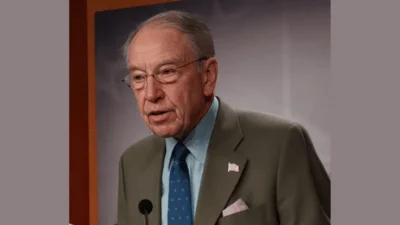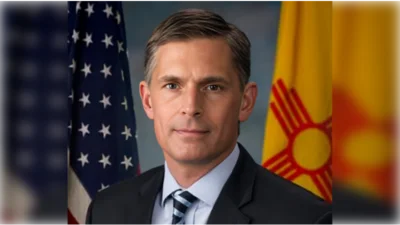The Congressional Record is a unique source of public documentation. It started in 1873, documenting nearly all the major and minor policies being discussed and debated.
“PUBLIC LANDS SERVICE CORPS ACT OF 2009” mentioning the U.S. Dept of Agriculture was published in the Extensions of Remarks section on pages E716-E717 on March 19, 2009.
The publication is reproduced in full below:
PUBLIC LANDS SERVICE CORPS ACT OF 2009
______
HON. RAUL M. GRIJALVA
of arizona
in the house of representatives
Thursday, March 19, 2009
Mr. GRIJALVA. Madam Speaker, today I am introducing the Public Lands Service Corps Act to expand an already successful program that employs and trains thousands of young people and helps repair and restore our public lands. I am delighted that my colleague, House Natural Resources Committee Chairman Nick Rahall, has agreed to join me as an original cosponsor of this important bill.
In 1993, when the Public Lands Corps was established through the good work of our late colleague Bruce Vento of Minnesota, there were huge backlogs in labor-intensive work needed on national park lands, forests, wildlife refuges, historic sites and Indian lands.
Today, we still face those challenges and more: years of inadequate funding have put these agencies further behind on vital maintenance work while infrastructure continues to crumble. Despite the best efforts of our underfunded agencies, natural and cultural resources have been neglected, and in many places the effects of climate change are magnifying earlier problems such as fire risk, damage by insects and invasive species and fragmented habitat.
We have started to attack this problem with the recently passed stimulus legislation, but that is only a start. Much remains to be done on public lands.
The Public Lands Corps is built on a long and proud tradition of conservation service on Federal lands that extends back to President Franklin D. Roosevelt and the Civilian Conservation Corps. That peace-
time army, numbering some 3 million young Americans, planted trees, fought fires, maintained trails and built shelters across our nation. The Youth Conservation Corps has given hundreds of thousands of young people valuable skills and experience while undertaking valuable conservation work.
In fiscal year 2008 alone, over 4,000 young people spent countless hours on 289 projects at 111 national park units mending trails, cleaning up campgrounds, controlling erosion, restoring habitat, and other projects to repair and restore park lands, facilities and resources. That was in national parks alone; imagine what we could accomplish if more federal agencies harnessed that pool of talent and enthusiasm for the benefit of our public lands, waters, and coastal and marine systems.
My bill will amend the Public Lands Corps Act of 1993 to expand the authority of the Interior and Agriculture Departments (including such agencies as the National Park Service, the Bureau of Land Management and the U.S. Fish and Wildlife Service, the U.S. Forest Service and the National Oceanic and Atmospheric Administration) to provide service-
learning opportunities on public lands; help restore the nation's natural, cultural, historic, archaeological, recreational and scenic resources; train a new generation of public land managers and enthusiasts; and promote the value of public service.
Additionally, the bill adds authority for the National Oceanic and Atmospheric Administration to participate in the program. NOAA, an agency of the Commerce Department, manages the National Marine Sanctuaries System, and with this new authority will be able to offer Corps members a chance to work in restoring coastal and marine systems along our oceans and the Great Lakes.
The bill will reinvigorate the Public Lands Corps programs by modernizing the scope of corps projects to reflect new challenges, such as climate change; and adding incentives to attract new participants, especially from underrepresented populations.
The legislation will ensure that, during their service term, participants receive adequate training for the work they have been assigned, including agency-specific standards, principles and practices. Language to ensure adequate housing, authorize participants in existing volunteer programs to contribute both as mentors and on Corps projects, expand the program for college and graduate students, and broaden preferential hire provisions is also included.
The bill would rename the corps as the Public Lands Service Corps, and remove the $12 million authorization ceiling, paving the way for increased funding for this excellent program.
Madam Speaker, I am pleased that President Obama and Interior Secretary Salazar have made national service a priority, and I am delighted to be a strong supporter of the GIVE Act, which we are considering this week. I want to thank the gentleman from California, Chairman Miller, for his very generous assistance in the drafting of the Public Lands Corps amendments I am introducing today.
I also want to thank the gentleman from West Virginia, Chairman Rahall, the chairman of the other committee on which I am proud to serve, the Natural Resources Committee, for his support of this legislation. Other members have also indicated their interest in service-learning on public lands, and I look forward to working with them, and with members of the other body who have a long interest in the Public Lands Corps.
Madam Speaker, we know the tasks and challenges that confront our land and water management agencies are great. This bill will help us meet those challenges.
____________________








